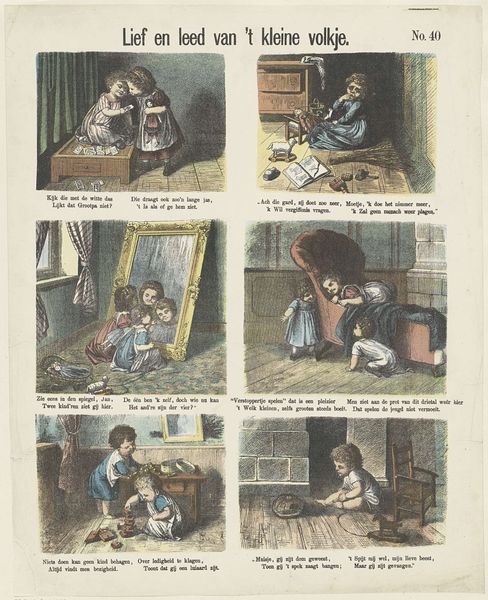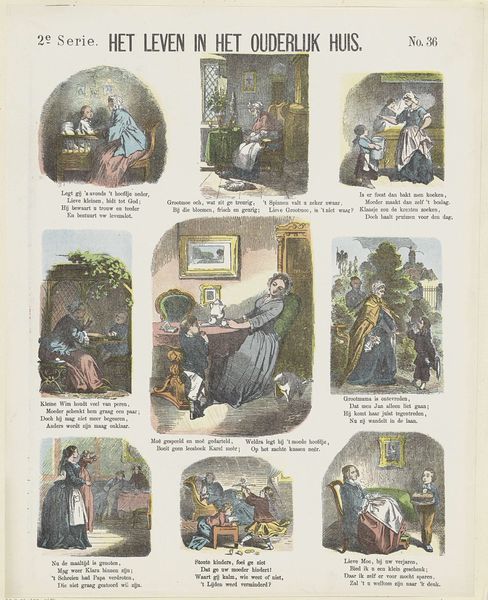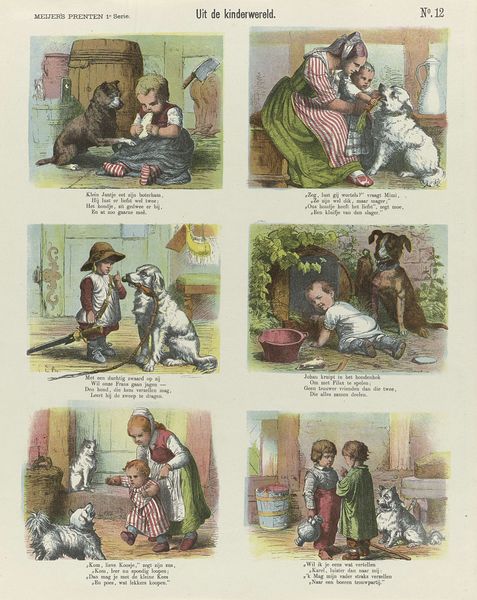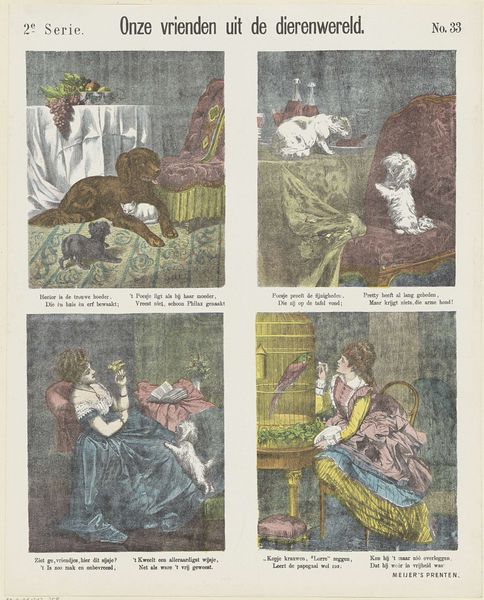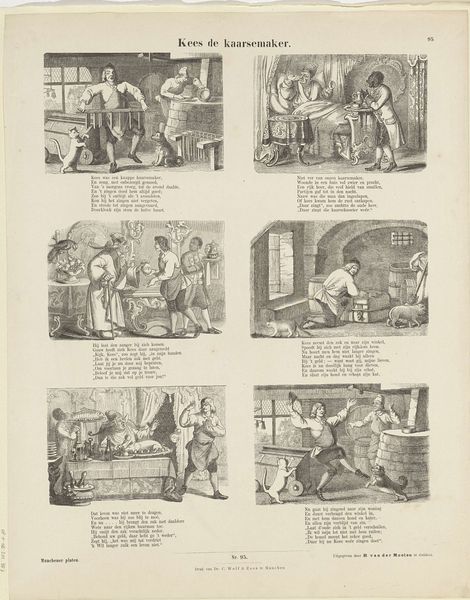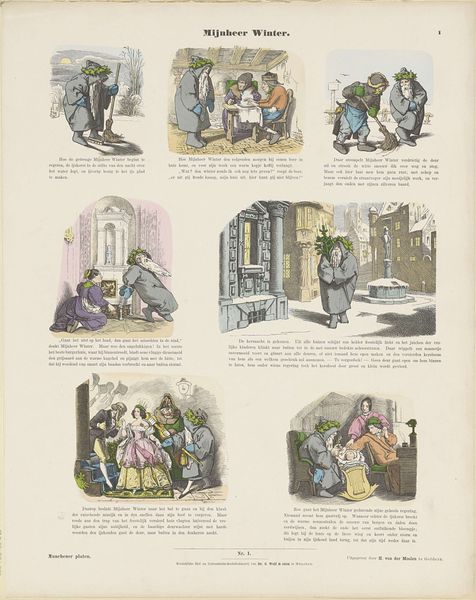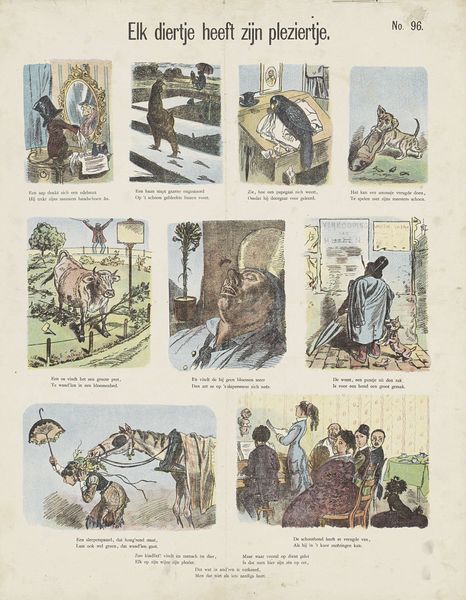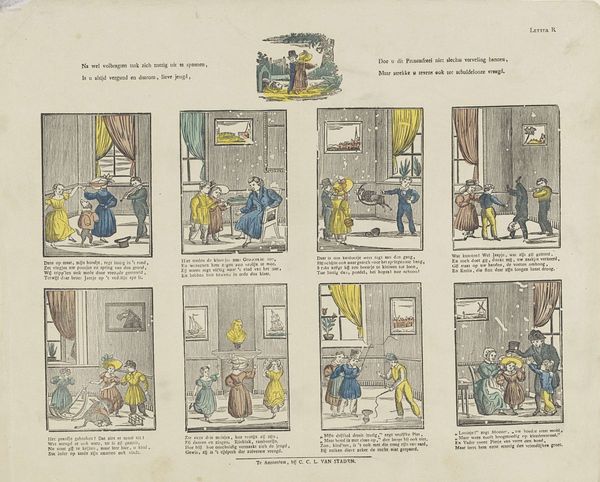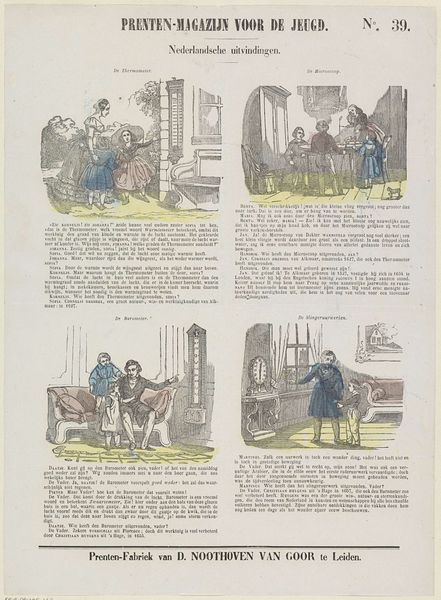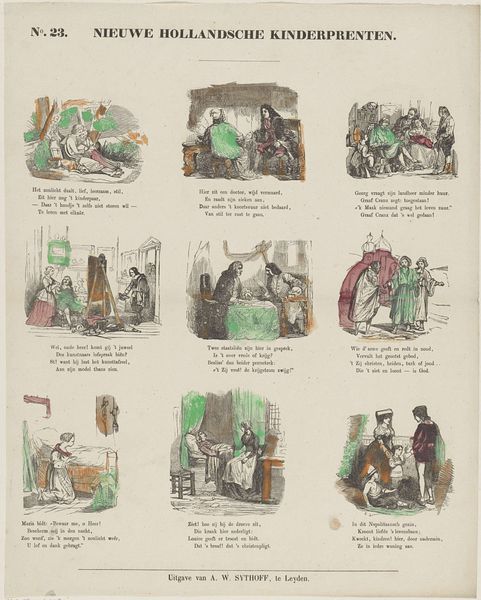
watercolor
#
narrative-art
#
dutch-golden-age
#
watercolor
#
child
#
folk-art
#
sketchbook drawing
#
watercolour illustration
#
genre-painting
#
watercolor
Dimensions: height 424 mm, width 333 mm
Copyright: Rijks Museum: Open Domain
Editor: So, this is "Hoe zich 't kleine volkje weert" from 1874 by De Ruyter & Meijer, done with watercolors. It feels like a glimpse into 19th-century domestic life, a little storybook of childhood. What symbolic meaning do you find embedded in these images? Curator: It's a fascinating series of vignettes, isn't it? Look at how the artists present the domestic space, not as a haven, but as a training ground. Each scene seems designed to illustrate a moral lesson or a practical skill. What emotional response does this inspire within you? Do these visual representations carry echoes of our contemporary culture? Editor: It's interesting you say "training ground." The imagery of the child weaving definitely suggests learning a skill, but there's also mischief. The last scene shows children pretending to be adults using a stick as a crutch... there's playful imitation at work here too. Curator: Precisely. Notice how play mimics labour, preparing children for adult roles, even at this time. Consider also the scene with the child being washed; is this just about hygiene? Or could it symbolize purification, preparation for a moral life? Visual depictions can convey a deeper psychological narrative beyond surface-level observations. Editor: I hadn't thought about that! The purification angle really resonates when compared to the image of the child next to a dangerous stove, for instance. The stakes suddenly feel much higher. It almost makes one want to explore ideas like innocence lost. Curator: It's like a handbook for societal values and beliefs, reflecting on ideals such as hard work, parental love, and moral development within the era it was created. Seeing all of that compressed within a single piece highlights that these aren’t just pleasant images but tools in the cultural construction of childhood. Do you see any symbols of modernity creeping in? Editor: The lamp and the stove, perhaps? This piece has made me think more deeply about how even seemingly simple illustrations can be loaded with cultural significance. Curator: Indeed. It also shows us the continuity of those meanings and visual cues throughout our own culture, with art remaining a memory trigger.
Comments
No comments
Be the first to comment and join the conversation on the ultimate creative platform.
